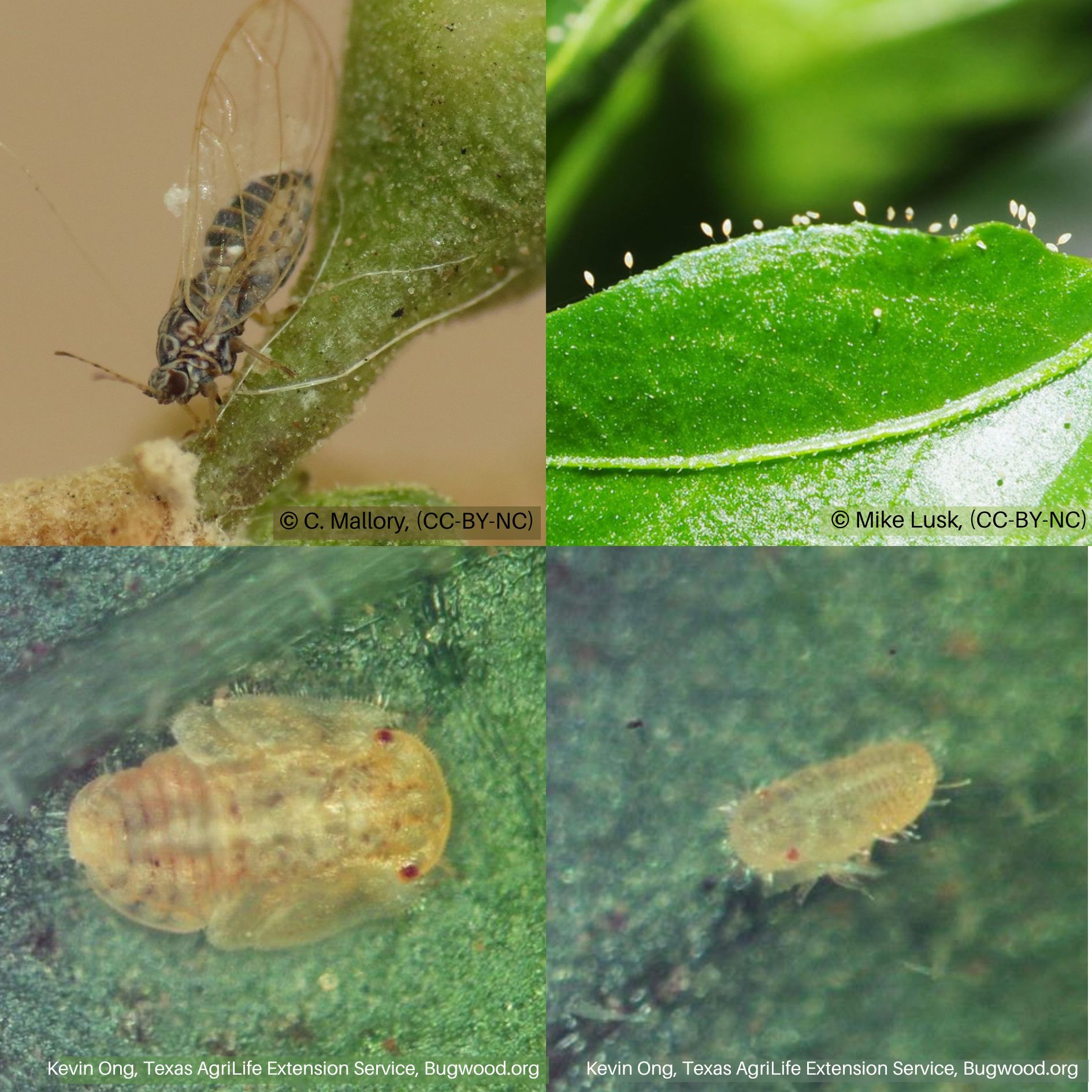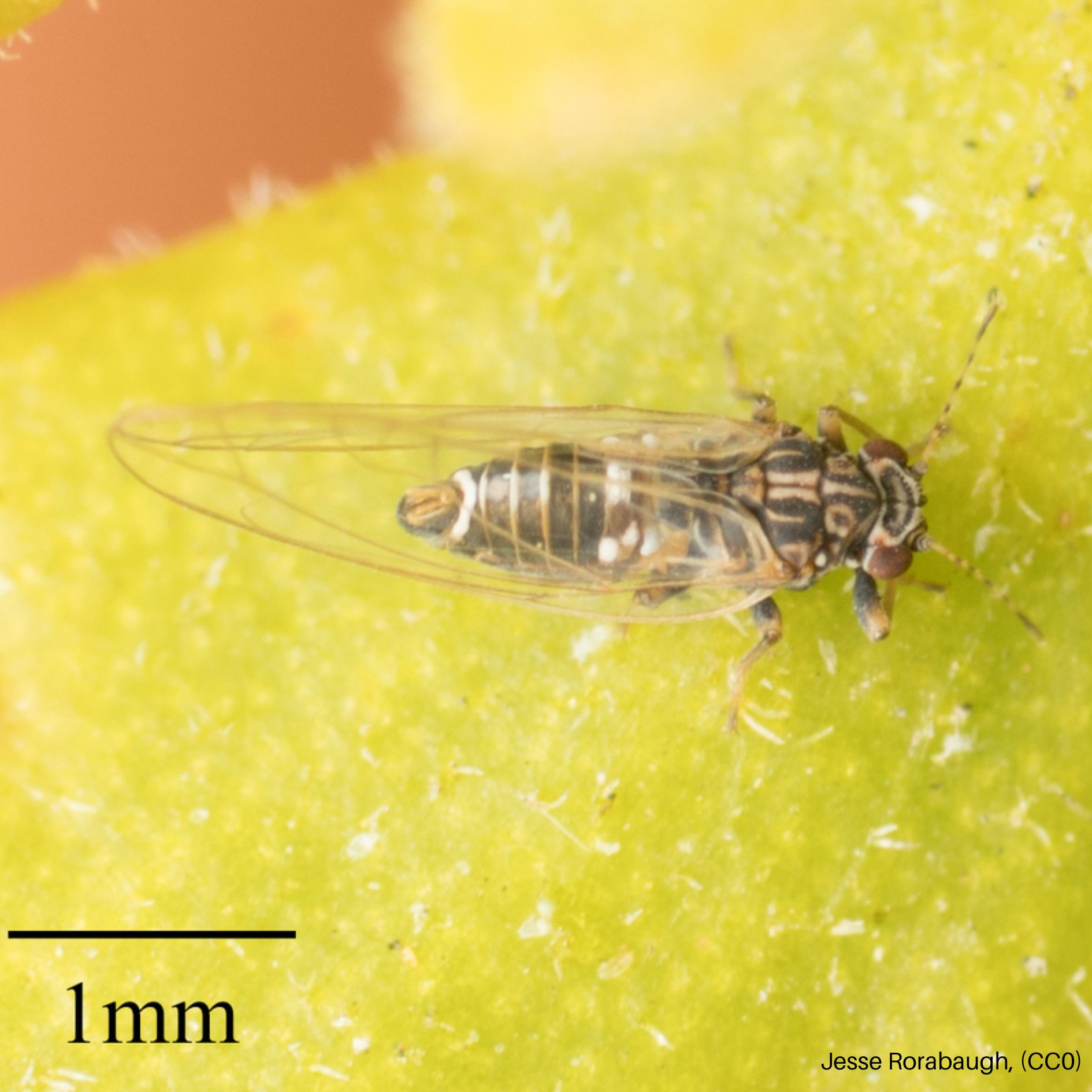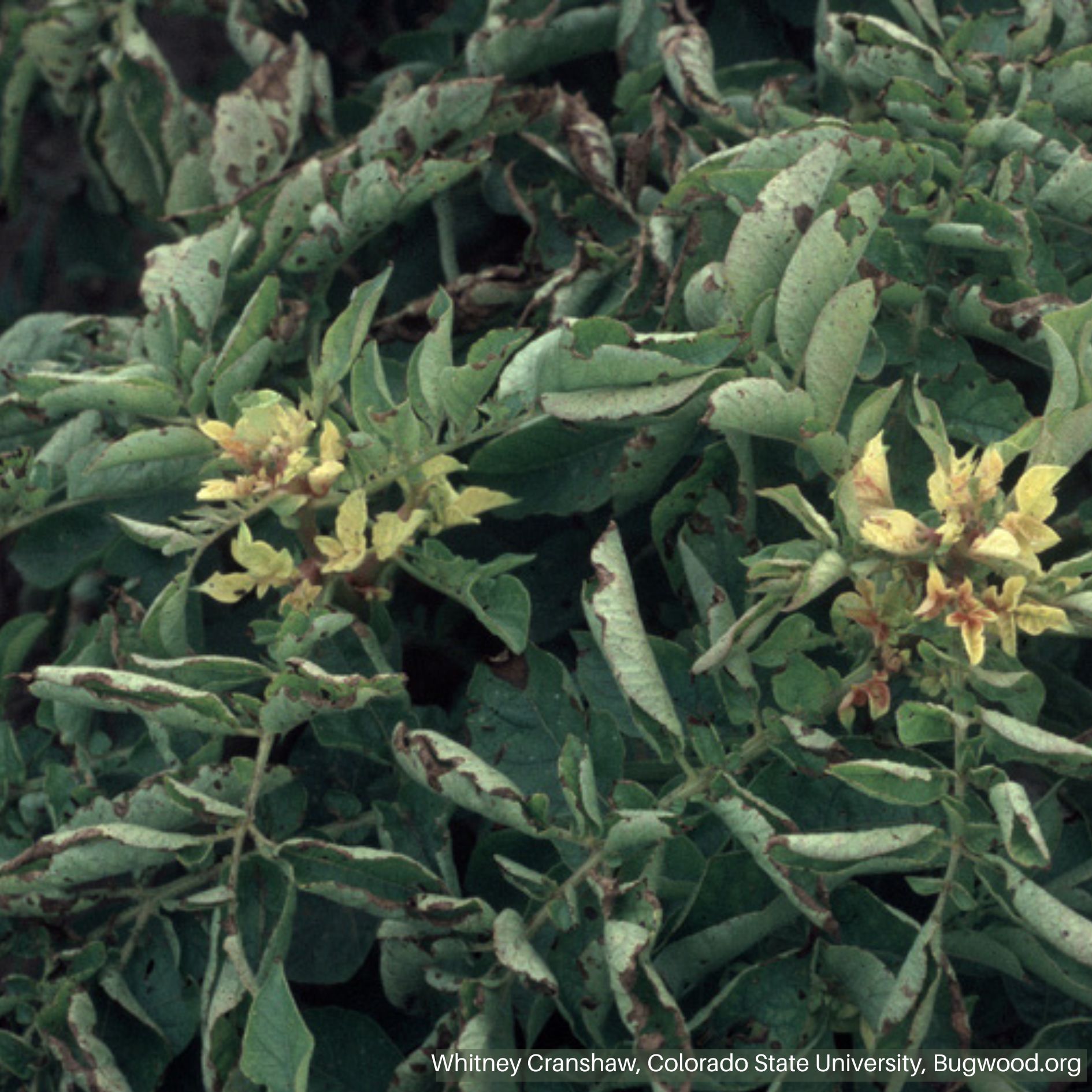Potato Psyllid
HOSTS
- Eggplant
- Pepper
- Potato
- Tomato
DESCRIPTION
Adults resemble small cicadas or winged aphids, readily jump when disturbed, and have black bodies with white markings and a white inverted ‘V’ on the back. Nymphs are flat, green (yellowish green or orange when newly hatched), with red eyes, and an oval-shaped body with spines around the edges.
BIOLOGY
Egg | Nymph | Adult
Potato psyllids have multiple generations a year. They overwinter as adults in warmer locations (not northern Utah).
SYMPTOMS
Nymphs and adults feed with piercing-sucking mouthparts causing disruptions in plant growth, collectively described as “psyllid yellows”. Common symptoms of psyllid yellows are leaf curling, slowed plant growth, and color changes. Damage to potatoes results in reduced size, premature sprouting, and rough skin. Tomato damage includes the production of small, soft, poor quality fruits. Potato psyllids also vector
Candidatus Liberibacter solanacearum which causes zebra chip disease in potato, tomato, and pepper.
GENERAL MANAGEMENT
- Place yellow sticky cards as soon as the potato season starts to detect the first occurrence of psyllid in the area.
- Look for nymphs and eggs on the undersides of leaves by collecting 10 mature leaves from the middle of the plant at 10 locations among the outer rows of the field.
- A hand lens is needed to see nymphs and eggs.
Psyllid yellows is generally less damaging than zebra chip disease. Zebra chip can be destructive for potato (especially for chip production), tomato, and pepper and is occasionally seen in these crops in Utah.
- Monitoring is a critical component of management decisions.
- Application of insecticides; there are currently no effective non-chemical controls for potato psyllid.
INSECTICIDES
Consider treatment if potato psyllids have caused zebra chip disease or psyllid yellows in past years, if nearby fields are experiencing these problems, or if potato psyllid is detected, even if populations are low.
Click here to reference insecticide options for commercial growers.
Click here to reference insecticide options for home gardeners.





